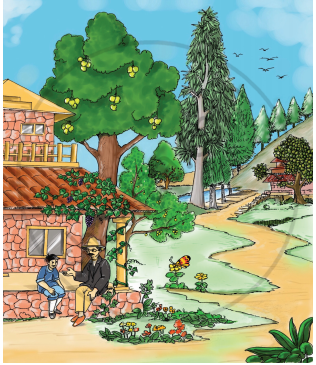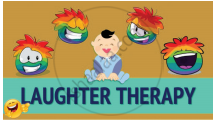Advertisements
Advertisements
Question
Give a brief account of the interaction between Grandpa and Jo.
Solution
Jo was looking at Laurie‟s grandpa‟s portrait when Laurie‟s grandfather walked into the library. Thinking that it was Laurie who had come in, Jo started commenting on the portrait without turning to see whether it was actually Laurie who had come in. On hearing Jo‟s observations about the portrait, Laurie‟s grandpa thanked her. Jo blushed on realising that Laurie‟s grandfather had heard everything. At first, she wanted to run away, but knowing that she would be termed as a coward if she ran away, Jo decided to stay and face the situation. Grandpa asked her a few questions and seemed to be pleased with her earnestness. Gauging the situation rightly, Jo boldly mentioned Laurie‟s plight to grandpa and offered a solution. Grandpa too acknowledged the same. Further, Jo and grandpa had a hearty conversation about the well-being of the March family. Finally, he urged Jo to visit their house more often. Overall, the interaction between Jo and grandpa was a dramatic but pleasant one. Jo returned ecstatic about how she had handled the tricky situation.
APPEARS IN
RELATED QUESTIONS
Answer any four of the following questions in 30 - 40 words each:
(a) What does the poet's smile in the poem, 'My Mother at Sixty-six' show?
(b) Listening to them, I see two distinct worlds ... ." In the context of Mukesh, the bangle maker's son, which two worlds is Anees Jung referring to ?
(c) Though the sharecroppers of Champaran received only one-fourth of the compensation, how can the Champaran struggle still be termed a huge success and victory?
(d) Which article in McLeery's suitcase played perhaps the most significant role in Evans' escape and how?
(e) Why does Derry’s mother not want him to go back to visit Mr. Lamb?
(f) What considerations influenced the Tiger King to get married?
Does the poem have a consistent rhyme scheme?
What does the word ‘cardboard’ denote in the poem? Why has this word been used?
Describe the mental condition of the voyagers on 4 and 5 January.
The power of poetry lies in suggestion and understatement. Discuss this with reference to the poem.
Taking off from Forster’s references to Emily Bronte, Sterne and Proust, discuss the treatment of time in some of the novels you have read.
What quality of 'beauty' and 'love' does the poem highlight?
Make groups and discuss the following:
Did they themselves suffer from those problems/setbacks?
Find evidence from the lesson and write in your own words.
Indians respect the freedom of others.
Find evidence from the lesson and write in your own words.
India has many amazing success stories.
Answer the given question in your own words.
Why did the swallow decide to stay under the statue of the Happy Prince at night?
Correct the following statement.
Sue and Johnsy were good neighbours.
Discuss in your class.
What are the advantages of learning science?
How are fabrics used in our daily life? List all the things that are made up of fabrics in your home. (At least 25)
Draw a diagram to show how life returned to the island. Label the diagram.
(Use the technique of drawing diagrams when you study science, geography, etc.)
Divide the story into different sections to show the different events and time periods in it. Give a suitable title to each section.
Write a short monologue using one of the following ideas. Write down the monologue and present it in the class.
Yonamine’s father worrying about getting her married.
Read the following sentence aloud. Write who said it and to whom.
“Why, the dress you go to the theatre in !”
Answer the following question and write in short, why the parody sounds funny.
What does the bee stand for?
‘Unke, Munke, Timpetoo,
I wish, my wish is coming true.’
Try to compose two other funny magical chants that have rhyming lines.
Put the following expressions in a table of Do’s and Don'ts as expressed by the poet.
- Please listen
- give me advice
- tell me why
- solve my problem
- just hear me
- accept as a simple fact
- contribute to my fear
- wait a minute
| Do’s | Don'ts | |
| 1. | ||
| 2. | ||
| 3. |
Read aloud a couple of stanzas of the poem ‘Invictus’ and ‘Please Listen’. In what ways do they differ? Think and fill up the table with ‘Yes’ or ‘No’.
| Invictus | Please Listen | |
| Rhyming lines | ______ | ______ |
| Steady rhythm | ______ | ______ |
| Uniformity in the length of lines | ______ | ______ |
| Uniformity of the number of lines in each stanza. | ______ | ______ |
| Figurative language | ______ | ______ |
Summarise this poem in your own words in 8 to 10 lines, highlighting only the main points.
Why is Great January annoyed with Holena and her mother? Does he help them?
Which event in the story tells us that the scarecrow was intelligent?
The narrator searched for three days to buy ceramic paint.
He decided to find his cousins’ home without their help. He asked the policeman for information in Italian because he.
Read the data below and answer the following question.

Choose the correct answer.
Percentage of women working in finance is the same as ______.
‘ If only her son were there, it would have been a different kind of Eid’! What had happened to her son?
Write the name of the toys against each picture.

‘They’ descended on the sweet and toy-vendors’ stores like an army moving to attack.
Who does they refer to? Did they move one by one in a line or in a big group?
Who told the children the story about the ghosts on Haunted Hill?
Read the comic strip and answer the following question.
Do you think that all the information online can be used without any permission?
How can we make our life worth living?
Ridleys come to lay their eggs in the month of January.
Read these lines and answer the questions given below.
And welcomes little fishes in
With gently smiling jaws!
- Who welcomes the fish? Why?
- Which line tells you that the crocodile is hungry?
Listen to your teacher read the first part of the story. Many things described in the story can be seen in the picture. Find and name them.

Mother called ______.
They rode back home quickly.
A ________ dies for the nation.
Find the rhyming word from the poem.
Country - ______.
Put the given time expressions in the correct columns.
| winter | morning | 2’ o clock | evening | 1947 |
| March | Sunday | 15th August | 4.30 PM | wedding day |
| in | at | on |
Jaswant Singh Rawat was awarded ______.
Jaswant was captured alive.
Read scene I of the play carefully and answer the question below.
List the characters that appear in the scene. What human characteristics do they exhibit?
How did Vicky change at the end?
It keeps the sack in every little______.
Identify the character or the speaker.
“I was cruel and selfish.”
______hem the border.
Which disaster had hit the village?
Kani took Teddy out for a ____.
Why did Tenzin cry every day?
What makes him fall?
How many marks did he score in his 12th board exam?
The child won’t ______ anything, if he closes his ears.
What was the event Megala participated?
While listening to the story, what did Alice see?
Now, read the following passage on “Laughter Therapy” and answer the questions that follow.

- Laughing is an excellent way to reduce stress in our lives; it can help you to cope with and survive a stressful life. Laughter provides full-scale support for your muscles and unleashes a rush of stress-busting endorphins. Since our bodies cannot distinguish between real and fake laughter, anything that makes you giggle will have a positive impact.
- Laughter Therapy aims to get people laughing, in groups and individual sessions and can help reduce stress, make people and employees happier and more committed, as well as improve their interpersonal skills. This laughter comes from the body and not the mind.
- Laughter Yoga (Hasya yoga) is a practice involving prolonged voluntary laughter. It aims to get people laughing in groups. It is practiced in the early mornings in open-parks. It has been made popular as an exercise routine developed by Indian physician Madan Kataria, who writes about the practice in his 2002 book ‘Laugh for no reason'. Laughter Yoga is based on the belief that voluntary laughter provides the same physiological as well as psychological benefits as spontaneous laughter.
- Laughter yoga session may start with gentle warm-up techniques which include stretching, chanting, clapping, eye contact and body movements to help break down inhibitions and encourage a sense of playfulness. Moreover, laughter is the best medicine. Breathing exercises are used to prepare the lungs for laughter followed by a series of laughter exercises that combine a method of acting and visualization techniques. Twenty minutes of laughter is sufficient to augment physiological development.
- A handful of small-scale scientific studies have indicated that laughter yoga has some medically beneficial effects, including cardiovascular health and mood. This therapy has proved to be good for depressed patients. This laughter therapy also plays a crucial role in social bonding.
Answer the following.
a. How does laughter help one to cope with stress?
b. Which word in the text (para 2) means the same as ‘dedicated'?
c. Why do you think voluntary laughter provides the same physiological as well as psychological benefits as spontaneous laughter?
d. ‘Laughter is the best medicine’. Explain.
e. Given below is a set of activities. Which of these are followed in the ‘Laughter Yoga’ technique?
- sitting on the ground with legs crossed
- body movements
- clapping
- closed eyes
- breathing exercises
- chanting
- stretching of arms and legs
- bending backwards
- running/jogging
- eye contact
f. ‘Laughter therapy also plays a crucial role in social bonding’. How?
Find words from the passage which are antonyms of the following.
- artificially (para 1)
- strength (para 2)
Read the following passage and do the activities:
A1. Fill in the blanks: (2)
- ______ percent of our daily communication is non-verbal.
- Eye contact is another type of ______ communication.
- Frequent blinking is a sign of the person feeling ______.
- One can readily detect _______.
|
According to some experts, a staggering 93 percent of our daily communication is non-verbal. Facial expressions are easy to decipher. One can readily detect happiness, sadness, anger. Physicians can tell a patient is doing well (or not) by looking at his/her face. Eye contact is another type of non-verbal communication, which can tell a lot about the other person. The eyes convey a range of emotions-happiness, sadness, boredom, surprise, confidence .......... even emotional interest. Staring at someone's forehead may intimidate the recipient, staring at the mouth is sometimes interpretated as a sign of emotional interest. In fact, staring into someone's eyes is a sign of lying, and so is looking away. In certain cultures, lack of eye contact is taken as a sign of respect. If body language is to be defined, it is a combination of facial expression, gestures, eye contact, body movements and posture and voice. Frequent blinking is a sign of the person feeling distressed or uncomfortable. If the pupils are dilated, it ofter indicates interest, even emotional interest. The lips also reflect our body language, and lip biting indicates worry and/or anxiety; tightening of the lips may be an indication of disapproval. Slightly turned-up lips indicate happiness and slightly turned-down lips indicate sadness. |
A2.

A3. Find the antonyms of: (2)
- verbal × ______
- entertaining × ______
- sender × ______
- comfortable × ______
A4. Do as Directed: (2)
- The eyes convey a range of emotions. (Frame a 'Wh' question in order to get the underlined part as answer).
- Physicians can tell about a patient's wellness. (Rewrite using 'able to')
A5. Personal Response: (2)
Non-verbal communication plays an important role in our daily life. Comment.
